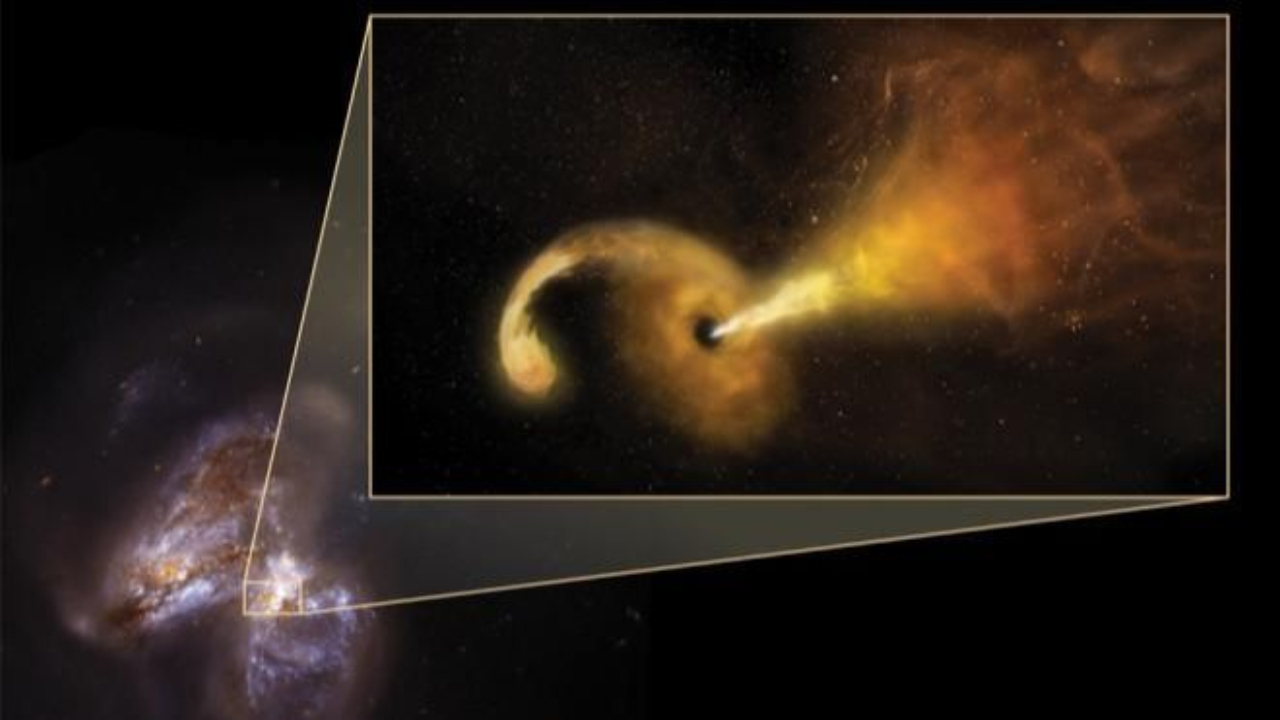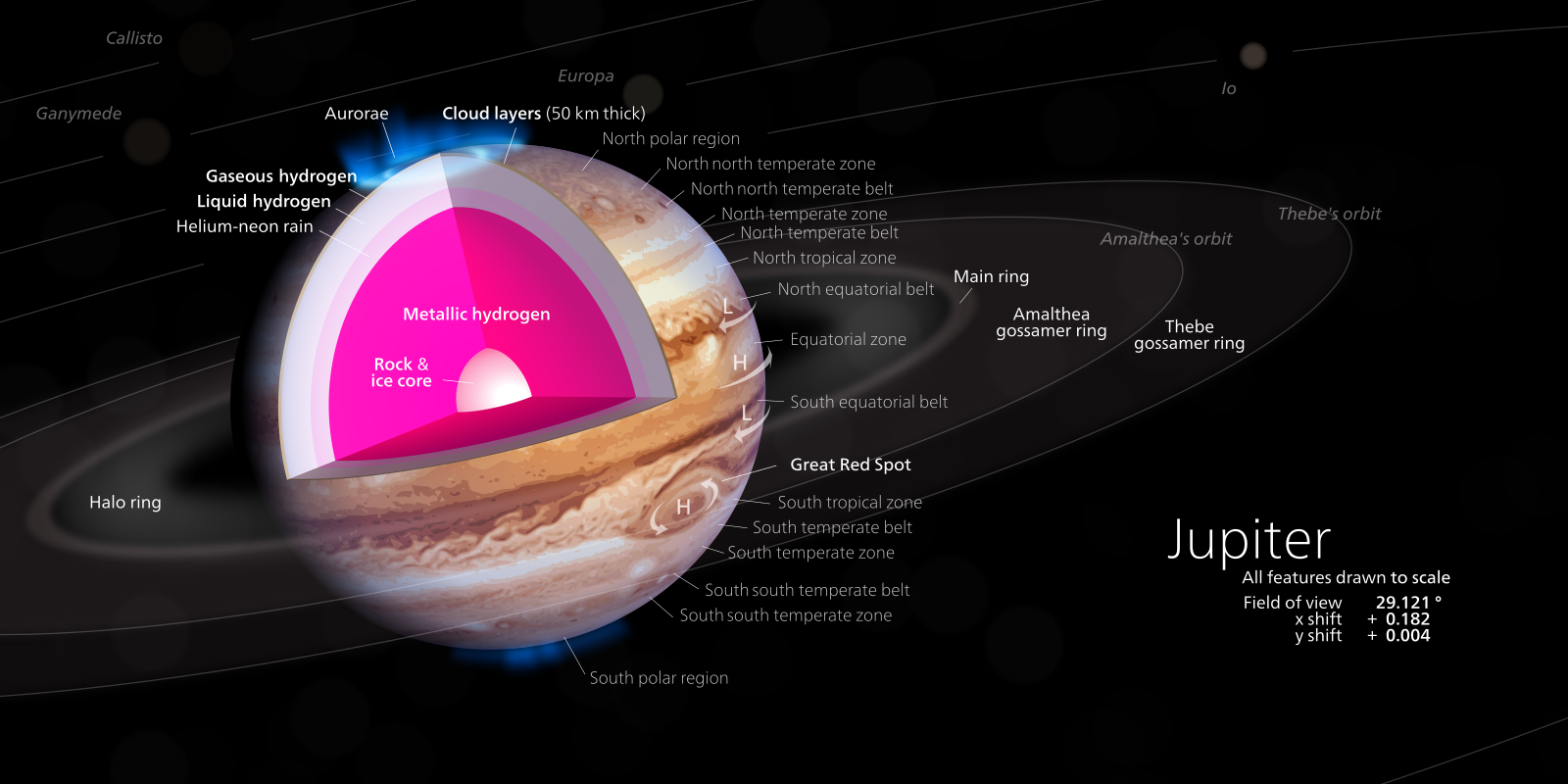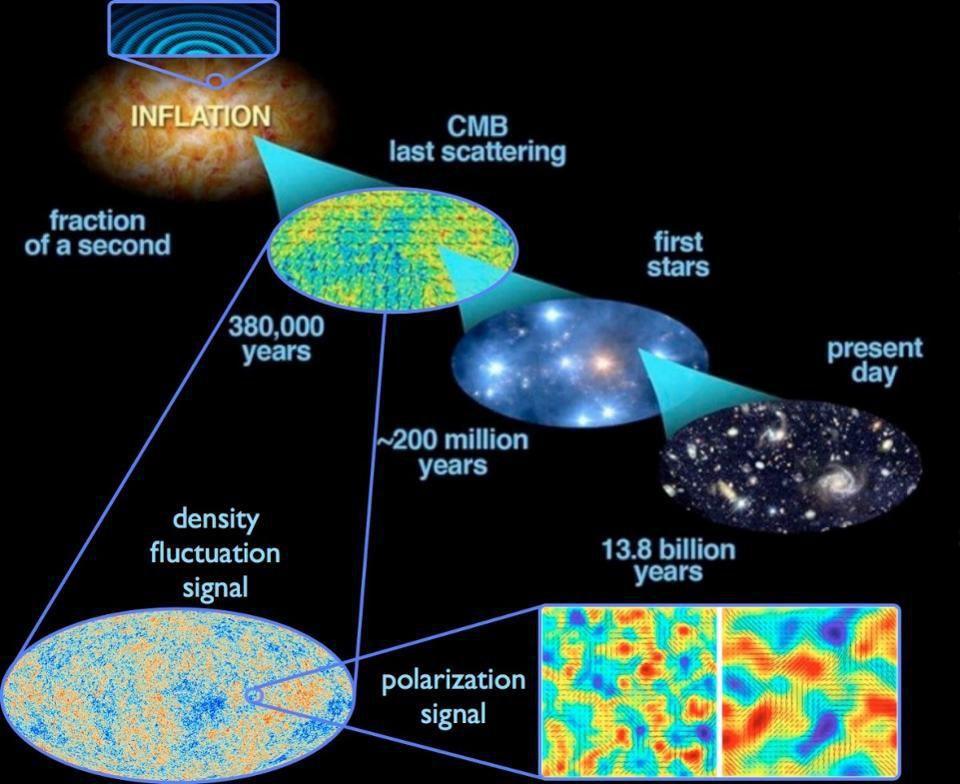Science News
& Faculty Articles
Black Hole Devouring Encapsulated Star Resembles a Torus-shaped Dynamics

Credit: Sophia Dagnello, NRAO/AUI/NSF; NASA, STScI
By Amal Pushp, Affiliate Physicist at the Resonance Science Foundation
A black hole by its own intrinsic nature has an extremely strong gravitational attraction and the intensity of which is primarily decided by mass as well as the nature of the astrophysical object that was crushed to form the respective black hole. In other words, the gravitational pull of a black hole is directly proportional to mass. Although the initial formation of a black hole results in a fixed mass, which principally depends on the mass of a star during its end stage, it continually grows in size by devouring stellar systems and other astrophysical objects floating in its vicinity.
Moreover, considering the black hole area theorem propounded by Hawking, the overall area of a black hole can never decrease so considering the classical scenario wherein it merges with another black hole, the area would always increase as the two black holes would form a single...
Physical Factors that Help in Categorizing Planets as Earth-like Systems

Credit: NASA/JPL-Caltech
By Amal Pushp, Affiliate Physicist at the Resonance Science Foundation
A planet that orbits a solar-type star and supposedly is a part of a solar system like ours with goldilocks conditions capable of supporting life and liquid water is commonly referred to as an exoplanet. The first exoplanet that was discovered to be revolving around a star like our sun was 51 Pegasi b. It is located about 50 light-years away in the Pegasus constellation and was discovered in 1995 by Swiss astronomers Michel Mayor and Didier Queloz [1]. This discovery won them a share of the 2019 Nobel prize in physics. Since the first detection, thousands of exoplanets have been discovered by probes sent to interstellar space by agencies like NASA.
Several factors are responsible for determining whether a newly discovered planet could be categorised as Earth-like. Here is a step-wise breakdown of all the important processes that scientists adopt in the classification of...
On the Mystery of Jupiter’s Cyclones Geometrical Patterns and Stability

Cyclones in North pole of Jupiter, by Juno Spacecraft. Image from original paper [1].
By Dr. Inés Urdaneta, Physicist at Resonance Science Foundation
Jupiter, the fifth planet from the Sun and the largest in our Solar System, is a gas giant primarily composed of hydrogen, though helium constitutes one-quarter of its mass and one-tenth of its volume. It is thought to have a rocky core of heavier elements, though it lacks a well-defined solid surface, like the other giant planets in the Solar System. Its outer atmosphere is defined by a series of latitudinal bands, with turbulence and storms along their interacting boundaries. Jupiter is mostly known for its Great Red Spot, a giant storm which has been observed since at least 1831.
 Diagram of Jupiter, its interior, surface features, rings, and inner moons. If Jupiter has an actual core or if there's actually metallic hydrogen inside, is currently purely theoretical. Credit image: Kelvinsong
Diagram of Jupiter, its interior, surface features, rings, and inner moons. If Jupiter has an actual core or if there's actually metallic hydrogen inside, is currently purely theoretical. Credit image: Kelvinsong
Juno spacecraft is the latest probe...
Eridanus Supervoid May Explain Cosmic Microwave Background Anomalous Cold Spot

By: William Brown, Biophysicist at the Resonance Science Foundation
A lot of information about the large-scale nature of the universe can be derived from detailed analysis of its ubiquitous thermal electromagnetic field, called the cosmic microwave background (CMB), for instance analysis of suppressed fluctuations at large wavelengths reveals a closed geometry of the universe— a torus-type geometry as we described in the RSF article A New Signature of a Multiply Connected Universe [1].

Inhomogeneities attributed to quantum fluctuations during the inflationary period are amplified across large-scale universal structure, and when inflation ends, they become density fluctuations and cause the differences in temperature observed in the CMB. Its an intriguing signal to study because it reveals an epoch when atomistic and cosmological structure where one-and-the same, and quantum behaviors that typify nature evolves into large-scale structural features of the universe. (Credit...
First Spatiotemporal Map of Galactic Local Region Reveals Mechanisms of Star Formation

By: William Brown, Biophysicist at the Resonance Science Foundation
Most studies of star formation—the “birth” of new stars—have been performed using static 2-dimensional photographs of star forming regions, or nebulae. Now, a new study using 3-D space motions that map stars in 3 dimensions of space, motion, and time astronomers have been able to generate a spatiotemporal map that reveales stars in our local region of the galaxy forming along the surface of an approximately 1000 light year wide bubble [1]. The stars in our “Local Bubble” are all moving away from a central point that appeared to form from several supernovae about 14 million years ago, which triggered expanding shockwaves that initiated condensation of interstellar gases into the discrete surface region of the bubble. The supernovae shockwaves—carrying all the heavy elements of the supernova metallogenesis—are responsible for triggering new star formation via the...
Pulsar Network Reveals Indications of Gravitational Wave Background Permeating Spacetime

By: William Brown, Biophysicist at the Resonance Science Foundation
The confirmation of gravitational waves back in 2015 has opened an entire new field of observational astronomy—in which the detection and analysis of gravitational waves will enable the study of truly remarkable cosmological processes such as black hole mergers, supermassive black hole binaries, the spacetime structure of black hole event horizons, and even possible wormholes. Gravitational waves may seem exotic, but it is thought that there should be a constitutive low-level gravitational wave background that emanates from the summation of all the activity of black hole binaries throughout the galaxy—like the stochastic sound of a crowded room buzzing with chatter, except in this case space and time are subtly stretching and compressing all around us with a constant flux of spacetime waves.

In an effort to detect and confirm this hypothesized gravitational wave background, The North American Nanohertz...



